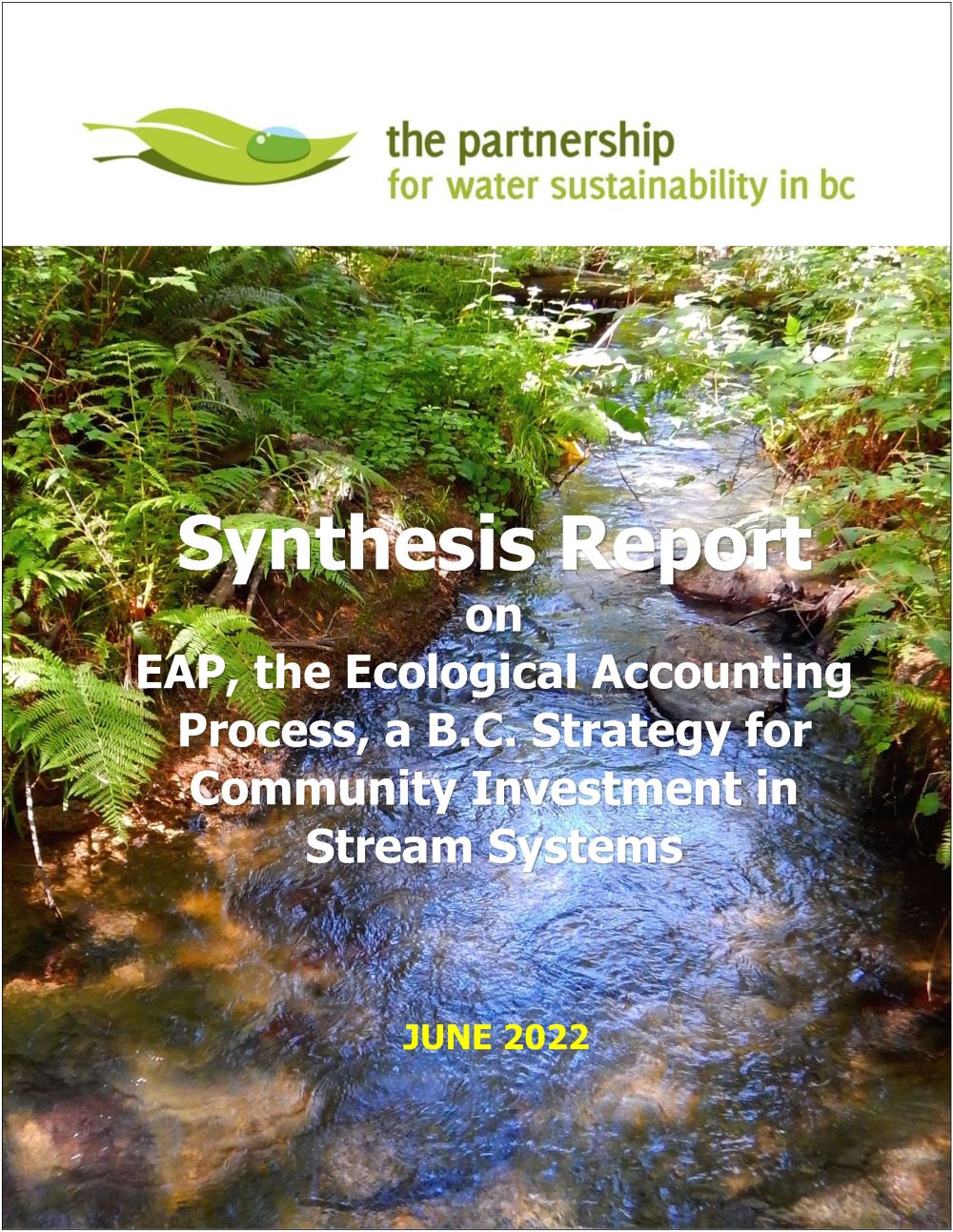ASSET MANAGEMENT FOR SUSTAINABLE DRAINAGE SERVICE DELIVERY: “Township staff are working on a long-term Ecological Services Initiative program. The Ecological Accounting Process analysis will be used to establish the baseline funding for payment to farmers,” stated Melisa Gunn, Agricultural Planner with the Township of Langley
Note to Reader:
In June 2022, the Partnership for Water Sustainability released the 4th in the Beyond the Guidebook Series. Titled Synthesis Report on the Ecological Accounting Process, a BC Strategy for Community Investment in Stream Systems, it showcases collaboration in action. EAP methodology and metrics allow local governments to make a convincing financial case for annual investment in stream systems to reduce the Riparian Deficit
DOWNLOAD A COPY OF Part C – Case Study Building Blocks Process. It introduces the nine case studies that are building blocks in the EAP program. Bertrand Creek in the Township of Langley is one of two Lower Mainland demonstration applications of EAP
Part C is structured in three sections: 1) EAP Program, Processes and Outcomes; 2) Capsule Synopses; and 3), Reflections on the EAP Journey. A two-page summary for each case study highlights what stands out about the creek system, explains why it was included in the EAP program, elaborates on the context for each “big idea” that emerged from the EAP analysis, and identifies a case study outcome that is defining.

EAP fits into local government Strategic Directions
“When the Partnership embarked upon EAP Stage 3 in late 2019, there was no way for anyone to predict either how mainstreaming would unfold over a two-year period or who would be involved. The hope was that there would be sufficient interest for three case studies per year,” stated Kim Stephens, Partnership Executive Director.
“By mid-2020, five willing local governments had stepped up to become project partners, representing a consortium of four regional districts and six municipalities. Each identified local streams for analysis.”
“With the perspective of hindsight, each local government took a leap of faith that EAP would fit into their strategic directions. There was no guaranteed outcome. There was simply a recognition by all of the need to ‘just do it’. The program as a whole and the individual EAP processes have exceeded expectations.”
“Every participating local government has benefitted from the building blocks approach to applied research. The sequencing of projects was fortuitous, resulting in insights which improved the research process. This energized the collaborative effort.”
To Learn More:
Table C2 presents capsule summaries which describe the outcomes for EAP projects. These highlight where and how EAP fits into strategic directions which represent a range of pathways. Click on the image to download a PDF copy of the table.
More than Asset Management
“A primary goal of the EAP program is to build support for the idea of operationalizing EAP within an Asset Management Strategy. This was the context for an initial Partnership objective in selecting case studies analyzing streams passing through a range of land use situations – from urban to suburban to rural – and in five South Coast regions,” continued Tim Pringle, EAP Chair.
“The unexpected outcome is the realization that local government has multiple pathways to achieve the goal of ‘natural asset management’. These pathways are in the form of planning and environmental initiatives that are challenged to bridge from high-level policy statement to on-the-ground realities.”
“Ultimately, the success of these initiatives would depend on having a measurable metric, the Riparian Deficit, a real number. This is what starts the conversation with engineering and finance about what must be in an Asset Management Budget if a local government is serious about a strategy for Sustainable Drainage Service Delivery.”

To Learn More:
To read the complete Synthesis Report, download a copy of Ecological Accounting Process, A B.C. Strategy for Community Investment in Stream Systems (2022) .
The “story of EAP” is told in six parts. To download them individually, click on the links:
Financial Case for the Stream – Executive Summary
Part A – Synopsis for the Busy Reader
Part B – Story Behind the Story of Sustainable Drainage Service Delivery
Part C – Case Study Building Blocks Process
Part D – Hydrology is the Engine that Powers Ecological Services
Part E – A Stream is a Land Use

DOWNLOAD A COPY OF https://waterbucket.ca/gi/wp-content/uploads/sites/4/2022/06/EAP-Synthesis-Report-Beyond-the-Guidebook-2022_Jun-2022.pdf


